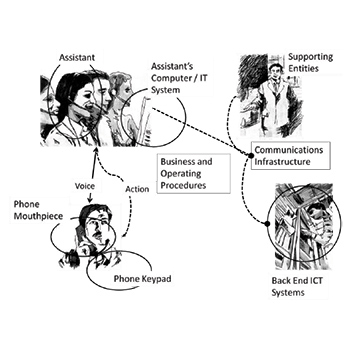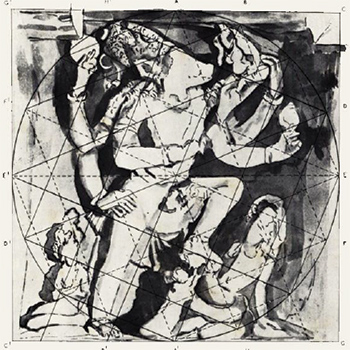Thesis
Batch 2013
(3 items)
ThesisBatch 2013
(3 items)
(3 items)
by Aneesha Sharma; supervisor/s: Prof. Ravi Poovaiah & Prof. Sangeetha Menon
by Pramod Khambete; supervisor/s: Prof. Uday A. Athavankar
Service relationships focus on the solution value and the experience value that are realised by the customer in service encounters. In today's techno-social and business environment, satisfying service design necessitates conscious design efforts to harmonise a mix of tangibles and intangibles such as people, objects, technology, systems, and processes.Specifically, we must now think in terms of designing for the experience of interacting with a constellation of "touch points" rather than channels. The coordinated operation of a group of interconnected Touch Points necessitates different considerations than designing individual Touch Points, which is difficult in and of itself.Multidisciplinary teams and collaboration with end customers would be essential to accomplishing the formidable task. By focusing on the service experience phenomenon and providing a framework useful in designing for a desirable customer experience, we attempted to contribute to the emerging body of knowledge and practises in service experience design.
We first provided a sharper definition of the concept of "touch point," adopted an ecosystem perspective, and modelled the service relationships anchored in customers' interactions with Touch Points during service encounters. Later, Pattern Language, which is an experience-focused, participatory approach for designing complex systems, was identified as a suitable candidate on which a design framework could be based. To gain a better understanding of the service experience phenomenon, existing knowledge was investigated, not only from pattern languages but also from various other disciplines and exploratory studies.From there, extensive data pertaining to service experiences, particularly interactions with Touch Points and Touch Point Ecosystems, was gathered in order to iteratively create the design patterns and language.An intermediate formative assessment was done to confirm that we were on the right track, and the language was refined. We also conceptualised the other components of the framework: a process for application of the pattern language and a "tool" to apply the pattern language.
by Prasad Prakash Bokil; supervisor/s: Prof. Shilpa Ranade
Design, as a process of originating and developing a plan for a product, a structure, or a system, has close associations with art, architecture, and technology. Research is an essential part of the activity of problem solving; thus, it is an intrinsic aspect of design practice. However, ‘research’ as a knowledge-based activity is still in the pre-paradigmatic phase with respect to the practise of graphic design. The emergence of the research area presented here was triggered by an exposure to the grids (time-division) discovered in ancient Indian stone reliefs and sculptures by Boner (1962). The aim of this research is to understand the state of the art of graphic design processes involving grids and to represent the knowledge gained in a theoretical framework for further applications.
The topic of interest here is the transfer of syntactic knowledge across distant domains of design, and the focus is on the grid, a well-known tool in design. The issue of the need to develop a systematic method to transfer grids across domains originated from the need to transfer knowledge from Indian art practise to contemporary design practice. The importance of cultural and contextual knowledge has been greatly emphasised in literature, but enough attention has never been given to the transfer of procedural knowledge between traditional art and craft practises and modern design practices. By focusing on the grids, this work aims at developing a method to transfer procedural and structural knowledge across the design domains. Analogy plays a very important role in design cognition. Design researchers have developed analogy-based design support, which has proved useful (Goel, 1997) for transferring structural knowledge.
The methodological framework used for this research is based on a research methodology that was proposed by Blessing and Chakrabarti (2009). According to the types of research proposed by DRM, this work fits in Type 5, where the aim is to develop support but the level of understanding of the existing situation is insufficient for the support's development. The salient steps in this research are: comprehending the research problem; understanding grids in graphic design; developing knowledge representations of grids; formulating a method for transferring grids; and evaluating the proposed method of grid transfer.


